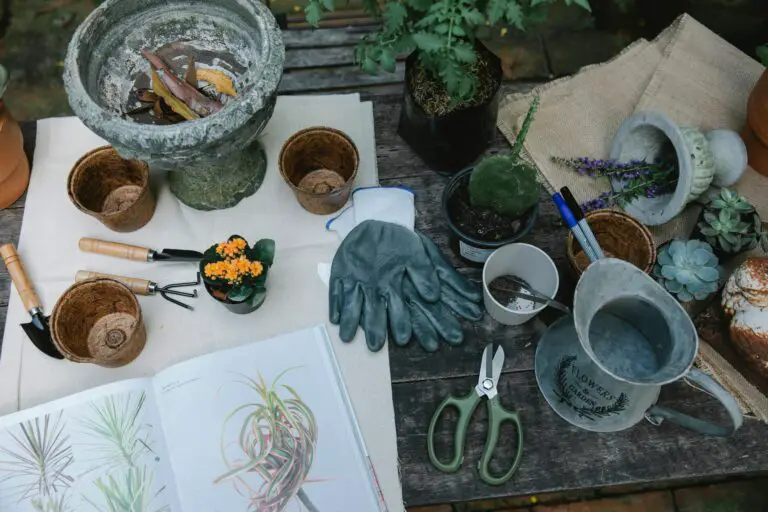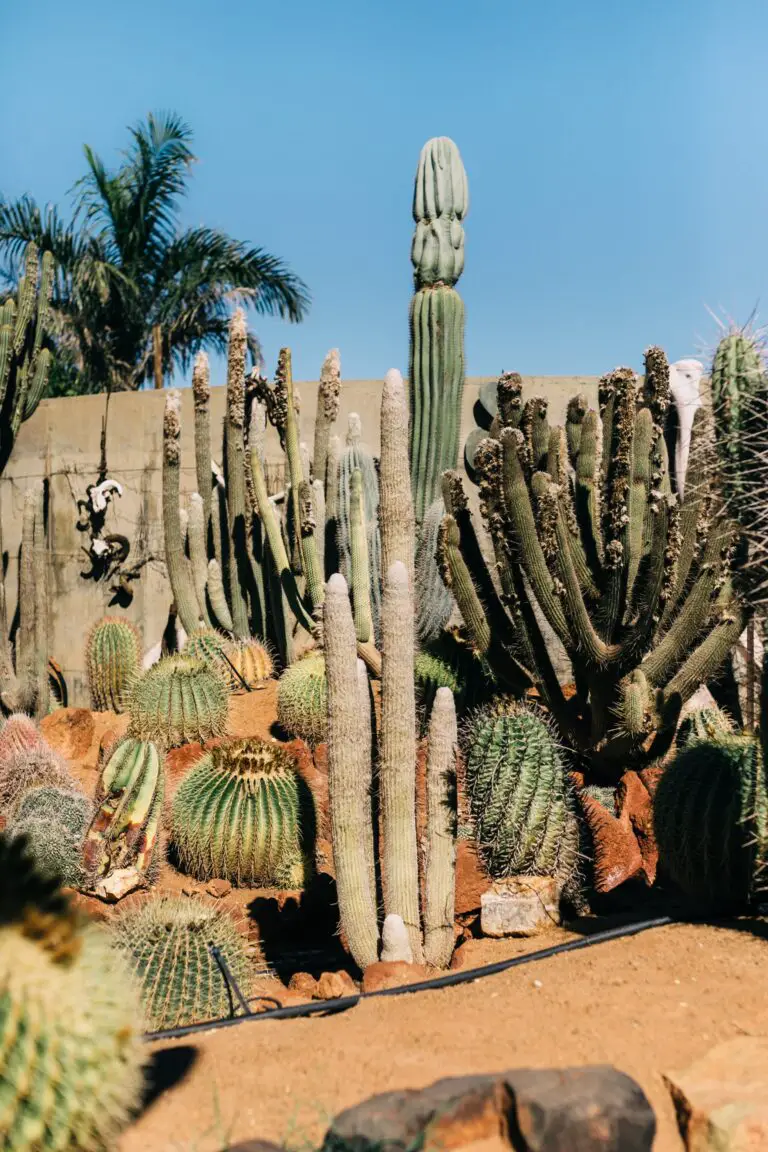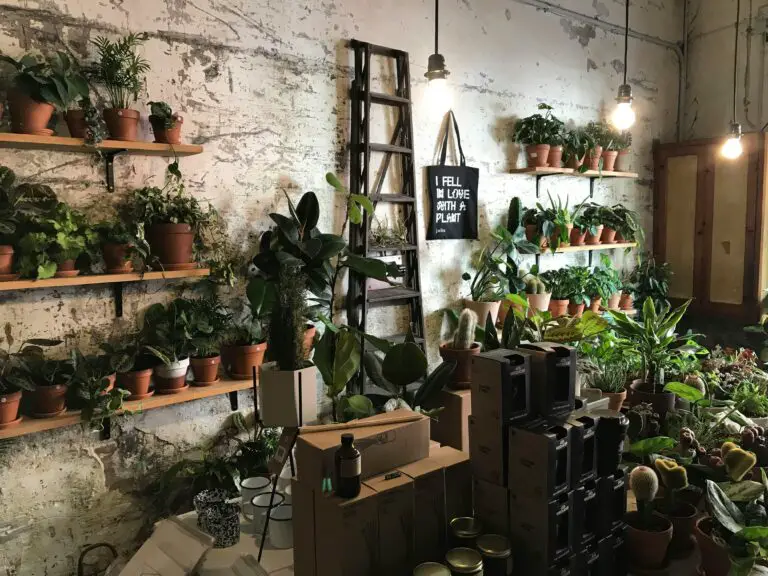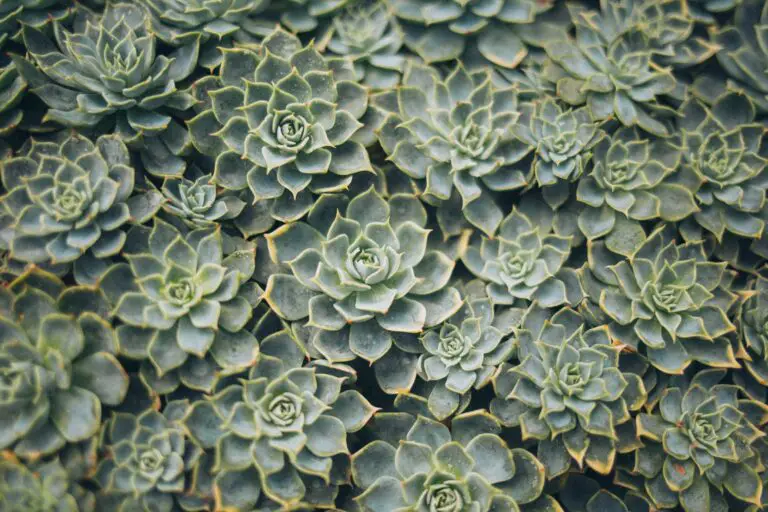Introduction to Senecio Succulents
Imagine entering a world where every plant holds a unique superpower, capable of thriving in arid landscapes with minimal care, yet flaunting a diverse range of forms and colors. Welcome to the remarkable realm of Senecio succulents, a group of plants that are turning heads in both desert gardens and chic urban spaces alike. Not just a mere component of the succulent family, the Senecio genus stands out with its intriguing shapes and resilience, making it a top pick for green thumbs and novices alike.
One may wonder what sets Senecio succulents apart from their fleshy-leaved cousins. It’s their ability to adapt and add flair to various settings, from a sun-drenched windowsill to a rockery that mimics their natural habitat. Each member of this genus comes with its own backstory of survival and beauty, such as the popular Senecio rowleyanus with its pearl-like leaves that cascade elegantly in hanging baskets, emulating a bejeweled waterfall.

To truly understand the allure of Senecio succulents, imagine them as living sculptures that grow and flourish with time, providing a living testament to nature’s ingenuity. And the best part? Their care is as simple as it gets. A splash of water here, some sunlight there, and voila! You can revel in the joy of these succulents without needing a green thumb. For those eager to dive deep into the essence of suave succulent care, peruse this insightful guide and kick-start your journey into the enchanting world of succulents.
In an era where life races past us, Senecio succulents offer a slice of serenity, inviting us to witness the slow and steady rhythm of nature. So, the next time you stroll through a garden or peruse a nursery, pause and admire these resilient botanical wonders. Perhaps, among their textured leaves and fleshy stems, you’ll find a new leafy companion to join you on life’s adventures.
Senecio Succulent Secrets: Thriving Tips & Care Insights
Varieties of Senecio: A Display of Diversity
Step into the world of Senecio succulents, where the diversity is as fascinating as the plants themselves. If you’ve ever marveled at the myriad of forms that these easy-to-care-for succulents can take, then you’re in for a treat. From the trailing strings of pearls to the geometric precision of the Senecio radicans, each species presents a unique aesthetic that can make any succulent collection shine.
Perhaps you’ve come across the plump, blue-green leaves of the ‘Blue Chalksticks’, or the Senecio serpens, basking in the sun with its silver-lavender hue. Then there’s the ‘String of Bananas’, an intriguing cousin to the ever-popular ‘String of Pearls’, offering an almost whimsical cascade of banana-shaped leaves. These are no ordinary plants; each variant of Senecio brings its own character and charm to the table—or the windowsill, if we’re being literal!
For those with a penchant for the peculiar, let’s not forget the ‘Fish Hooks’ succulent, a species that showcases curved leaves reminiscent of the aquatic tool it’s named after. These are real living sculptures that invite conversation and curiosity, sparking joy and interest in equal measure.
Dive deeper into the genus, and you’ll uncover species that are more than just a visual treat; they’re stories of resilience and adaptation. The way the ‘Dusty Miller’, or Senecio cineraria, has evolved to thrive in coastal conditions with its felt-like leaves is a tale of nature’s marvel. And it’s not just about their rugged beauty—certain Senecio species are known for their forgiving nature, often seen thriving despite neglect or in less-than-ideal growing conditions.
Integrating Senecio succulents into your living space isn’t just about adding greenery; it’s about bringing in a piece of the wild, a snapshot of the vast and varied landscapes they originate from. Whether you’re crafting a dense, textured arrangement or looking for that single statement piece, Senecio succulents are a testament to nature’s creativity and versatility.
Let’s not just talk about these alluring succulents—take a look for yourself. Here’s a video showcasing some of the most captivating Senecio succulent varieties for you to enjoy and perhaps inspire your next botanical adventure:
Remember, whether you’re a seasoned succulent guru or a newcomer to the world of drought-tolerant darlings, there’s a Senecio that’s sure to capture your heart. Their versatility and ease of care make them an exemplary choice for any level of plant enthusiast. Revel in the variety and let these succulent secrets inspire your green thumb pursuits!
Ideal Conditions for Your Senecio Growth
Unlocking the full potential of your Senecio succulents starts with understanding their specific growing preferences. These hardy plants originate from diverse regions which means their adaptability is high; however, providing the right balance of environmental factors can turn a lackluster Senecio into a vivid, thriving beauty.

Take for instance the need for adequate lighting. Senecio plants bask delightfully in the sun, mirroring their natural habitat. Imagine rows of Senecio rowleyanus, also known as String of Pearls, lining a sun-drenched windowsill, their pearl-like leaves glinting under the sun’s rays. They demand bright, indirect light to maintain their unique foliage without being scorched.
Masterful care practices indicate a temperate climate is most conducive for Senecio growth. Most varieties prefer temperatures between 70°F to 80°F during the day, slightly cooler at night, mimicking the warmth of their native climes without the risk of frost that can prove detrimental.
When it comes to humidity, finding a sweet spot is key. These plants do not favor high humidity levels which can promote rot. Imagine them in their natural surroundings: dry, arid regions where the air is more about whispering winds than moist breezes. Indoor environments should aim for moderate to low humidity, ensuring you have a happy and healthy Senecio display.
Delving deeper into care insights, make sure to peek in on our complete Succulent Care Guide for tailored tips on nurturing a lush indoor oasis.
Soil & Planting: Laying the Foundation for Success
Embarking on the enchanting journey of cultivating Senecio succulents begins with nailing down the fundamentals: soil mix and planting. The right soil is the bedrock of your Senecio’s future prosperity. Imagine you’re baking a cake; would you start with just any old flour? Of course not! Similarly, picking the perfect soil concoction is crucial – a well-draining, loose, and gritty mixture will do the trick, ideally a specialized cactus or succulent blend from your local nursery. Think of it as selecting the right suit for a high-powered executive; it needs to be tailored to fit impeccably.
Next, let’s talk containers. Your choice here sets the stage for your plant’s life story. You want a pot that not only complements your home’s decor but one that has drainage holes to evict excess water like unwanted party crashers. Size matters here, folks – a cozy abode, not too large, ensures that your Senecio isn’t swimming in soil, which can lead to soggy roots and a less-than-happy plant.
When it comes to planting, imagine your Senecio as a delicate treasure, nestled into its new home with the utmost care. Ensure that the roots have contact with the soil without being compacted – they need to breathe and stretch out like a yogi in a morning session. And always remember, the key ingredient here is love mixed with a dash of patience.

Now, for our grand finale, the pièce de résistance – drainage and aeration. It’s a simple but profound truth that the best soil mix in the world means nothing if your Senecio’s roots sit in waterlogged despair. Elevate your pots or add a layer of gravel at the base to create a drainage dream team. With every watering, you’re not just quenching thirst, you’re orchestrating the flow of life-giving oxygen to the roots, promoting a flourish of growth and vitality that would make any plant parent proud.
By adhering to these foundational tips and insights, your Senecio succulents will not only survive but thrive, painting your garden or indoor space with their uniquely captivating allure. Let these guidelines be the cornerstone of your gardening adventure, and watch your succulents become the envy of neighbors and friends alike. After all, success in the Senecio succulent world hinges on the mastery of these elemental practices. Now, let’s get planting!
Watering Wisdom: Hydration Strategies for Senecio
When it comes to nurturing your Senecio succulents, striking the right balance with watering is akin to mastering an art form. These hearty little plants, equipped with an innate ability to thrive in arid environments, demand a nuanced approach to hydration that both respects their desert heritage and adapts to your local conditions.
The mantra for watering Senecio succulents? “Less is more.” But let’s dig a little deeper. Imagine, for a moment, the natural habitat of these drought-resistant champions—sparse rainfall, intense sun, and well-draining soil. To mirror these conditions at home, let your Senecio dry out completely between waterings. It’s a dance of deprivation and satiation that encourages strong root development and a robust, resilient plant.
Consider the experience of a friend who, after incessant overwatering, observed her Senecio’s leaves yellowing and dropping like cautionary tales. With advice and alterations, a shift to a more sporadic watering schedule gave life back to her once-wilting window sill wonders. A testament to the forgiving nature of these succulents, her Senecio rebounded, presenting plump, jade-colored leaves as tokens of her newfound watering wisdom.
As a rule of thumb, during the growing season (spring and summer), a thorough dousing every couple of weeks should suffice, allowing the water to flow freely from the drainage holes of your pot. In the dormant cooler months, reduce this frequency further, and always be attentive to the current thirst cues of your Senecio—a lightweight pot often signals that it’s time for a drink.
To support your Senecio journey, explore our in-depth resource on succulent care that dives into the intricacies of creating the perfect desert oasis within your home.
Now, visualize a Senecio succulent soaking in the bliss of the perfect watering routine:

Remember, each Senecio has a unique thirst based on its specific environment and container. Monitoring the soil dryness is key—poke your finger an inch deep; if it’s dry, it’s time to water. By refining your hydration strategy with attentiveness and adaptation, your Senecio succulent will flourish, displaying a lushness that proclaims its contentment.
Nutrition and Fertilization: Feeding Your Senecio
Imagine your senecio succulent as a tiny, green gourmet, with specific dietary needs that change through its lifecycle. Just like a budding chef needs the right ingredients to create a mouthwatering meal, your senecio requires the right blend of nutrients to flourish. But don’t fret! You won’t need to enroll in a horticulture class to master the art of fertilizing these charming succulents.
First things first: balance is key. Senecio succulents crave a balanced fertilizer, often marked with an even N-P-K ratio like 10-10-10, which spells out the perfect trio of nutrients—nitrogen, phosphorus, and potassium. Apply this succulent food during the active growing season, typically spring and summer, when your plant is mustering all its energy to sprout new leaves and, if you’re lucky, show off some flowers.
Too much of a good thing? That can spell disaster for your delicate senecio. Overfeeding can lead to nutrient burn, visibly scorching your plant’s roots and leaves. Think of it as force-feeding a rich dessert to someone who’s just finished a hearty meal—not a pleasant experience! To avoid this, fertilize only once a month during the growing season and take a break during the dormant winter months.
If your senecio could talk, it would probably tell you to hold off on those high nitrogen feeds that are often pushed on generic houseplants. High nitrogen can encourage leggy, weak growth in succulents, just like fast food can lead to unwanted pounds in humans. Instead, opt for a potassium-rich diet to promote robust, compact growth and spirited blooms.
For our visual learners, nothing beats a good video tutorial. showcases practical Senecio Rowleyanus (String of Pearls) care tips that are applicable to many senecio varieties.
When it’s time to whip up a succulent feast, don’t reach for the kitchen scraps. These aren’t your typical compost-loving veggies. Senecios prefer a specialized succulent and cactus fertilizer that mimics their natural, arid homelands. These formulas often include micronutrients like calcium and magnesium, which are like the secret spices that give your plant that extra zest.
Taking these care insights to heart will ensure that your senecio isn’t just surviving, but thriving, showcasing an exuberance that every succulent lover aspires for their leafy companions. Remember, feeding your succulent isn’t just about following a schedule—it’s about understanding the rhythm of your plant’s life and catering to its evolving needs.
Propagating Your Senecio: Multiplying Beauty
Unlock the potential of your green space by mastering the art of propagating Senecio succulents. This journey begins with the simplicity of a cutting, a baby offset, or the tiny promise held within a seed. Let’s dive into a world where every snippet and sprout can become a thriving plant, revealing how to duplicate the serene beauty of Senecio succulents with finesse.

Starting with Cuttings: Your First Foray
Imagine transforming a single leaf or stem into a full-fledged Senecio plant—a testament to nature’s magic. Select a healthy, plump leaf or a segment of stem with several leaves, and let the cut end callous over for a day or two to prevent rot. Nestle the cutting into well-draining soil and watch as it calls forth new roots and leaves, a process often taking just a few weeks to unfold.
Nurturing Offsets: Little Clones Awaiting
Offsets, those delightful mini-me’s hugging the base of your Senecio, are a breeze to separate. Gently pull these tiny treasures away from the parent plant, allowing them to dry briefly before granting them a new home in a cozy pot of soil. As they root and grow, they become stunning replicas of their parent, each with a tale of its own.
Sowing Seeds: Patience Pays Off
For those who enjoy a slow dance with gardening, Senecio seeds offer a rewarding experience. Sprinkle these whispers of potential onto a tray of fine, moist soil, covering them ever so lightly. Exposed to bright, indirect light, they’ll germinate, unfurling the first shy leaves that mark the beginning of a new generation of succulents.
Tips for Successful Senecio Propagation
Achieving success with propagation demands patience, a gentle touch, and an environment that mimics the origins of your Senecio. Ensure your propagation station offers plenty of indirect sunlight, warmth, and airflow. Mist the soil lightly to keep it slightly moist, fostering an inviting cradle for young roots without drowning them in excess water.
Common pitfalls, such as overwatering, lack of light, and incorrect temperatures, can easily thwart your propagation efforts. Be vigilant and consistent in providing the optimal conditions, and your result will be a collection of vibrant, self-propagated Senecio, each carrying the genetic legacy and resilience of the mother plant.
Embrace the role of a plant parent and watch as your propagation prowess leads to a lush landscape of Senecio succulents, transforming your space into a testament to growth and renewal.
Pests and Problems: Protecting Your Senecio
Step into the world of succulents, and you may just find yourself amidst a drama as compelling as any blockbuster movie. Our protagonist, the Senecio succulent, often faces a multi-faceted array of challenges that would threaten its survival. Let’s embark on a journey to understand the common pests and diseases that are the archenemies of your succulent’s well-being.
Imagine this: you’re admiring your collection of Senecio when suddenly, you notice some unwelcome guests. Mealybugs, those tiny, cotton-looking culprits, have decided to make a feast of your succulent’s sap. These pests are not just a nuisance; they can weaken your plant, making it susceptible to disease and other problems. It’s not just the mealybugs though; spider mites, aphids, and fungus gnats are auditioning for their part in this sinister play too.

However, don’t let the sight of pests and diseases dishearten you. There’s an arsenal of preventative measures and treatment options at your disposal. Keeping an eagle eye on your Senecio for early signs of trouble is key. Regular monitoring will reveal any action scene in its early stages, allowing you to nip the problem in the bud with organic insecticides or a strong jet of water.
Neem oil, a natural and effective potion, can play the role of a superhero when it comes to combating these tiny villains. Applied diligently, it can clear your Senecio of these unwanted invaders. Furthermore, ensuring that your succulent is not overwatered will deny fungus the damp stage it needs to thrive, thus preventing root rot and other moisture-loving diseases.
Remember, every Senecio has its own unique story. For some, it’s a smooth sail with few interruptions, while others might feel like they’re in a constant battle. Yet, with proper care and early intervention, most of these pest plots can be turned around for a happy ending. Keep a keen eye on your Senecio, and you’ll be scripting a success story filled with lush growth and vibrant health.
Styling with Senecio: Decorative and Practical Uses
When it comes to sprucing up our living spaces, Senecio succulents are more than just a trendy choice—they’re a statement of style and a nod to sustainability. Let’s delve into some creative ways to make these resilient beauties a part of your daily life.
Imagine walking into a room, where the soft textures of Senecio leaves complement the modern, crisp lines of your furniture. Whether it’s the silvery cascades of Senecio rowleyanus (String of Pearls) tangled around a chic, minimalist shelf or the robust, blue-green rosettes of Senecio serpens (Blue Chalksticks) anchoring the corners of a sunlit room, these succulents bring a touch of natural elegance that is both eye-catching and soothing.

Not only do they excel as indoor decorations, but Senecio succulents also thrive outdoors, adding a lush, drought-tolerant element to your garden design. Picture a serene rock garden peppered with the silver tufts of Senecio cineraria (Dusty Miller), creating an otherworldly landscape that requires little to no maintenance.
For those who wish to embrace eco-friendly practices, Senecio succulents are a dream come true. Incorporating them into living walls or green roofs can not only elevate the aesthetics of your exterior but also contribute to better insulation and natural cooling of your home. This practical use merges functionality with beauty, showcasing how green solutions can be seamlessly integrated into modern living.
There’s a harmony to be found in pairing Senecio succulents with natural materials like wood, stone, or terracotta. These companions highlight the succulent’s distinctive textures and shapes, promoting a sense of calm and connection to nature. Whether you’re crafting a centerpiece for your dining table or curating a collection for your home office, these plants serve as a daily reminder of life’s simple pleasures.
Embracing Senecio succulents within your decor isn’t just about following a trend; it’s about crafting a space that tells a story of resilience, sustainability, and intrinsic beauty. So why not start your own Senecio story today?
Senecio Succulent FAQ
Are you grappling with the delicate dance of watering your Senecio succulent? Or perhaps you’re pondering how much sun is too much for these sun-loving showstoppers? You’re not alone in this botanical ballet, and this FAQ section will guide you through the terpsichorean challenge of Senecio succulent care.
How Often Should I Water My Senecio Succulent?
Let’s tackle one of the most common conundrums plant parents face: hydration hesitation. These succulents come from arid origins, so imagine yourself in a desert, wouldn’t you appreciate a refreshing drink after a long drought? That’s your Senecio’s watering cue—wait for the soil to completely dry out, then drench it thoroughly. Think of it as a “feast-or-famine” approach for your thirsty friend.
What’s The Perfect Spot for My Senecio in Terms of Sunlight?
Here’s the sunny scoop—Senecio succulents are sunbathers by nature, but even they have their limits. Place them where they can bask in the morning rays and seek shade when the sun gets sassy in the afternoon. An east-facing window is their idea of real estate heaven—enough light to glow, but not too much to frazzle their fleshy leaves.
Is It Common for Senecios to Drop Leaves?
Witnessing leaf drop can feel like a personal slight from your leafy comrade, but don’t take it to heart. It’s as common as finding sand in a desert. Overwatering is often the culprit, so if your Senecio starts shedding faster than a snake dumps its skin, reassess your watering rhythm. Alternatively, an occasional leaf drop is totally normal—consider it their way of making room for new growth.
Can I Propagate Senecio From Cuttings?
The magic of propagation! Snip off a healthy piece, let it callous over for a day or two as if it’s healing from the initial shock, then gently nestle it in some well-draining soil. Keep it moist but not marshy, and voilà!—you’ve got yourself a baby Senecio in the making.
And because we’re living in the age of information and technological marvels, why not visually feast on some top Senecio succulent care tips? Grab a cup of your favorite brew, settle into your comfiest chair, and hit play on this insightful video that will absolutely transform the way you tend to these drought-dodging darlings.



